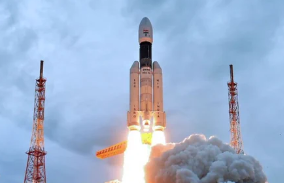Cheetahs will be able to roam freely in India for the first time since they were declared extinct in 1952.
On Saturday, a group of eight cheetahs arrived from Namibia to commemorate Prime Minister Narendra Modi’s birthday.
They will be quarantined for a month before being released in Kuno National Park in central India.
Also read: Cheetahs at Kuno National Park: Total money spent on the operation
Cheetahs once shared jungles with other big cats like lions and tigers, but they went extinct 70 years ago.
They are the world’s fastest land animals, reaching speeds of 70 miles (113 kilometres) per hour.
This is the first time a large carnivore has been transported from one continent to another and released back into the wild.
At least 20 cheetahs are on their way to India from South Africa and Namibia, which are home to more than one-third of the world’s 7,000 cheetahs.
Also read: Watch: PM Narendra Modi releases African cheetahs at Kuno National Park
On Saturday, the first group of eight children, five females and three males aged two to six years arrived in Gwalior, India, from Windhoek, Namibia.
In 1952, the Indian authorities officially announced the cheetah was extinct in the country. The last three recorded Asiatic cheetahs were hunted and killed by Maharaja Ramanuj Pratap Singh Deo of the princely state of Koriya in 1947.
Also read: Asiatic cheetah extinction: How Indian cheetahs disappeared
Who was Maharaja Ramanuj Pratap Singh Deo, the man responsible for killing India’s last cheetahs?
On January 1, 1948, Maharaja Ramanuj Saran Singh Deo, the last ruler of the Koriya princely state, signed its accession to the Indian Union. The Maharaja is notorious for shooting and killing 1710 Bengal tigers – the highest known individual score. But he does not hold the official record of shooting into extinction 3 of the last physically documented Asiatic cheetahs in India, essentially making the species nearly locally extinct in 1947.







